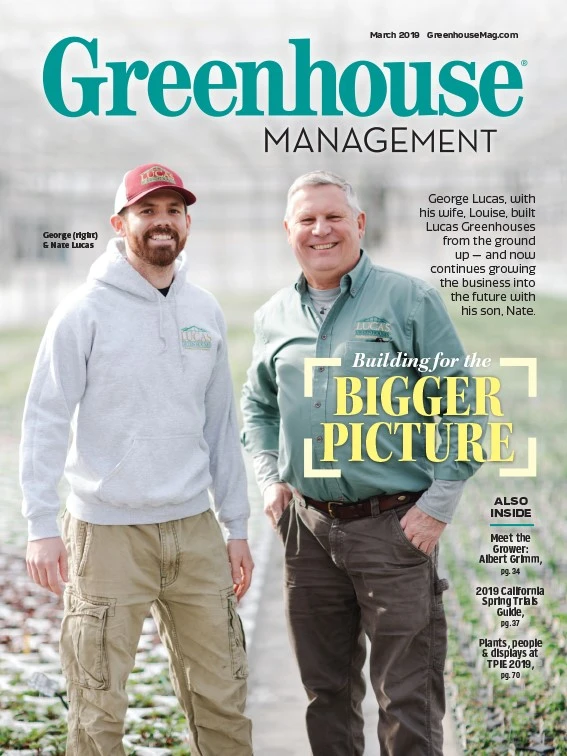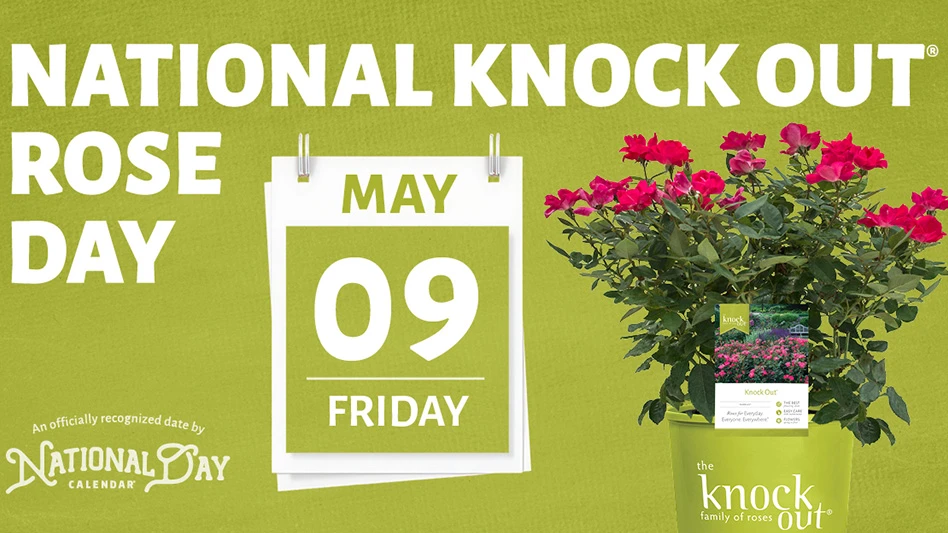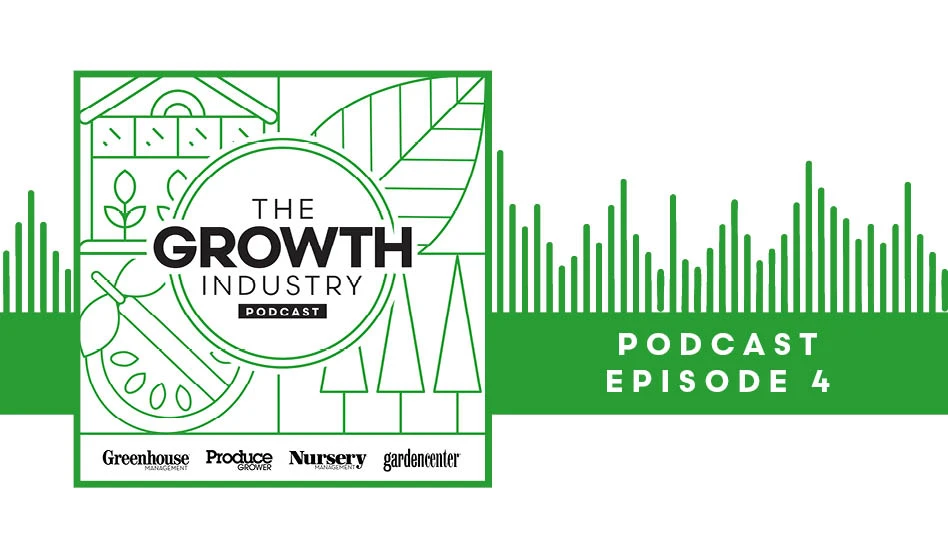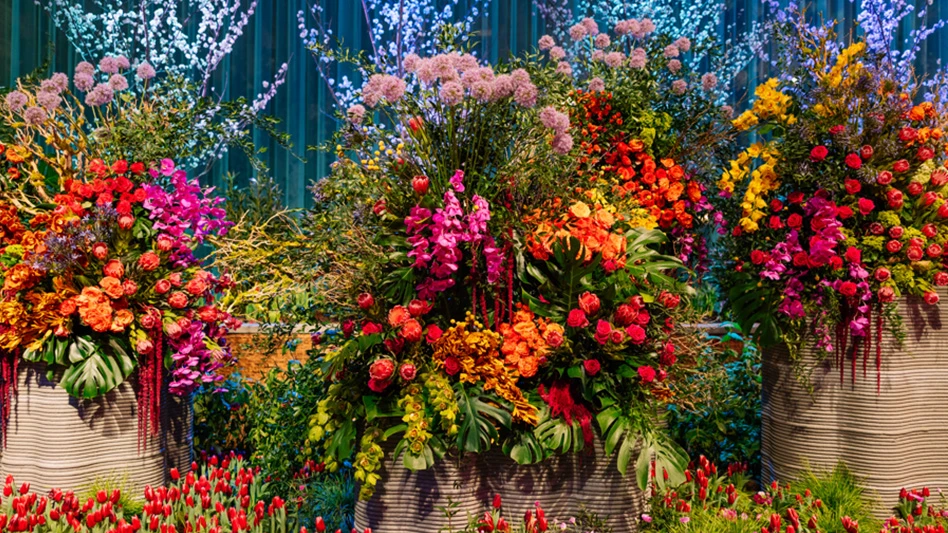

Genetics: When considering what to grow, the number of herbaceous culinary herbs can be staggering. However, there are certain herbaceous herbs which are either widely or more commonly grown. The most popular culinary herb is basil, and, more specifically, sweet basil (Ocimum basilicum). There are other basils that are popular, such as citrus, cinnamon and Thai basils, but these are purchased in a much smaller volume than sweet basil. Culinary herb producers can’t grow only basil — a complete palate of herbs must be grown. Some of the other relatively more popular herbs include mint (Menth sp.), flat-leaf parsley (Petroselinum crispum), cilantro (Coriandrum sativum), rosemary (Rosmarinus officinalis), oregano (Origanum sp.), and thyme (Thymus vulgaris), and other seasonal offerings such as sage (Salvia officinalis). There are many other herbs that can be grown, and you can tailor your product mix to suit the market(s) you serve. Regardless of which culinary herbs you select to grow, nearly all herb cultivars were developed for field production and you will want to trial cultivars to see which perform best in your production system and environment. Selecting high-yielding cultivars with good greenhouse performance can be one of the most impactful decisions you’ll make.
Production systems: Culinary herbs are produced in the same systems that are used for other leafy crops, such as nutrient-film technique (NFT) and deep-flow technique (DFT) or raft systems (Fig. 1). Less-traditional production systems such as beds or containers filled with soilless growing substrate may also be used for herb plantings.
Propagation and young plant production: For NFT and DFT systems, phenolic foam and stone wool are the most commonly used substrates regardless of how herbs are propagated. The majority of culinary herbs are propagated by seed. Seed can be sown either individually or in multiples. While covering can benefit the germination of some species, it is generally not required. High humidity and moderately warm temperatures from 73 to 78° F can promote radicle emergence; lower temperature and increase light as cotyledons develop. Fertilize seedlings from the start of propagation with a diluted fertilizer solution of 100 to 150 ppm N. Some herbs may be propagated from cuttings, such as some cultivars of rosemary or specialty sage cultivars (Fig. 2). Culture is comparable to seedling: start off with higher humidity, warmer temperatures and lower light, then as cuttings root and develop, lower the humidity and temperature and increase light. Be sure to check if the varieties you want to propagate by cuttings are protected varieties or not.
Nutrient solution: For culinary herbs grown in water-culture systems like NFT and DFT, the pH and electrical conductivity (EC) of the nutrient solution need to be managed throughout production. Herbs can be grown well across a range of nutrient solution ECs. The EC, if maintained, has little effect on yield, in that increasing EC does not necessarily increase yields. If the EC is consistently maintained at or above 0.5 m and does not fluctuate greatly, the range of ECs suitable for herb production can be relatively wide (0.5 to 4.0 mS/cm). By maintaining an EC of 1.0 to 2.0 mS/cm, you can grow healthy looking herbs with adequate tissue nutrient concentrations. Some herbs have a greater requirement for specific nutrients. Sweet basil is a good example; it requires higher concentrations of magnesium compared to other species, and is also prone to display iron deficiency if inadequate iron is provided or solution pH gets too high.
Temperature: Herbs vary in their response to air temperature, with respect to growth and development, and can be classified as cool, moderate or warm-growing species. The majority of herbs, including favorites like dill, parsley and cilantro, grow well at moderate greenhouse temperatures with average days up to 72 to 75° F. While these species also tolerate cool temperatures, production time will be increased the cooler they are grown. Alternatively, basil species grow fine at standard temperatures but grow best at warm temperatures into the upper 80s° F. When trying to determine which air temperature(s) to use in your facility, consider the requirements of the different species that you are growing, as well as the area each species occupies in your production area; this is one of the challenges of growing a variety of species in a common environment.
Light: Most culinary herbs grow best with moderate to high daily light integrals (DLI) of 12 to 15 mol·m–2·d–1 or greater. Depending on where you are located, supplemental light is beneficial for increasing DLI during those times of year that are light-limiting, from late fall, through winter, to early spring in many parts of the country. While some herbs have a photoperiodic flowering response, photoperiod is usually not managed for flowering as herbs can be harvested prior to flowering.
CO2: Like other crops, supplemental carbon dioxide (CO2) can increase basil productivity and this is especially true when CO2 can be limiting in the greenhouse (i.e. late fall, winter, and early spring). Maintain CO2 concentrations at up to 1,000 to 1,500 ppm to enhance growth rates. Only add CO2 when vents are closed so additions aren’t lost to the atmosphere

Pollination: Since culinary herbs are produced for foliage, not fruit, no flower pollination is required. Some herbs are produced for their seed. But those herbs are produced in the field, not in controlled environments.
Pruning and training: Culinary herbs do not require pruning or training during production.
Pests: Aphids, greenhouse whitefly and spider mites are some of the more common pest problems of greenhouse herbs. Aphid infestations can explode if not caught early and spot-treated. Biological control using beneficial insects is certainly one option for control but, unlike fruiting vine crops, beneficial insects may still be on foliage at the time of harvest.
Diseases: Like any crop grown in NFT and DFT systems, Pythium in nutrient solutions can be problematic if it gets established. Fusarium can also be problematic. Botrytis can be problematic if herb canopies are dense and/or the greenhouse is too humid; for plants that are harvested multiple times, the wound from cutting can be an entry point for the disease. Downy mildew has also been increasingly challenging for basil growers to control if established. Preventing diseases is key, as there are few chemistries which are registered for controlling diseases of greenhouse herbs.
Physiological disorders: There are few physiological disorders associated with culinary herbs. The most common is bolting, or premature flowering. For some species such as cilantro and dill, this can occur if plants are grown with excessively warm temperatures like those seen during summer greenhouse production.
Harvesting: Since herb shoots are harvested, then aggregated and sold in bunches or clamshells, there are two different options for harvesting plants: a single harvest or multiple, successive harvests. A single harvest can be beneficial for turning crops and replanting with clean material to reduce the chances of pest or disease pressures building up. Multiple harvests result in greater cumulative yield per plant, but the crop time is longer and successive harvests may not be as good as the initial harvest. When making multiple harvests off the same plant, be sure to leave enough leaves to support shoot regrowth.
Postharvest care: Like other crops, herbs should be cooled down after they are harvested and packed. While species vary in their requirements for storage temperatures, most importantly basil should not be stored below 50° F to avoid chilling injury; most other herbs can be stored at cooler temperatures (32 to 35° F) to maintain quality.

Explore the March 2019 Issue
Check out more from this issue and find your next story to read.
Latest from Greenhouse Management
- Tony Abbas named vice president of sales and business development at Prospiant
- Grant awarded to test western U.S. wood species for use as wood fiber potting substrate
- Pennsylvania Horticultural Society announces 2025 Gold Medal Plant winners
- GIE Media Horticulture Group wins five regional 2025 Azbee Awards of Excellence
- Terra Nova Nurseries introduces rust-free and disease-resistant heucherella
- John T. Nickel, founder of Greenleaf Nursery Co., passes away at 89
- Three tours offered at 2025 Farwest Show
- Garden Media Group announces sixth annual Women in Horticulture Week





